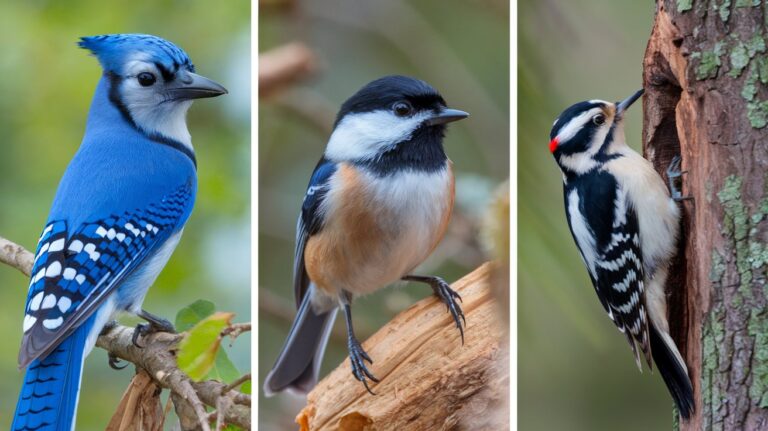21 Popular Backyard Birds in Arizona (With Pictures!)
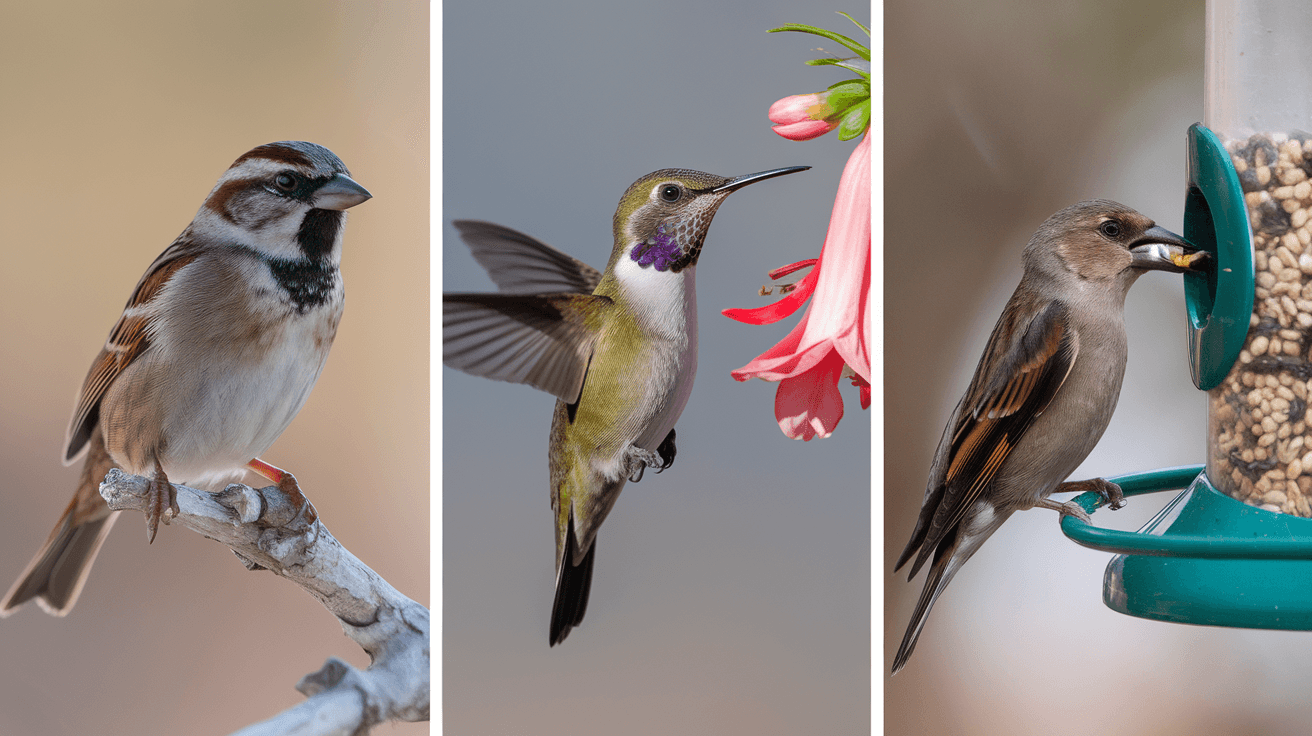
Arizona is a birdwatcher’s paradise, home to an impressive variety of backyard birds. With over 500 bird species recorded in the state, many of them can be spotted right outside your window, from vibrant hummingbirds to striking woodpeckers and cheerful songbirds.
Whether you’re a seasoned birder or just starting out, recognizing these feathered visitors can be a rewarding experience.
In this article, we’ll explore 21 of the most popular backyard birds in Arizona, helping you identify and appreciate the diverse avian life that thrives in the Grand Canyon State.
Jump to a Section
- 1) House Sparrow
- 2) House Finch
- 3) White-Winged Dove
- 4) White-Crowned Sparrow
- 5) Lesser Goldfinch
- 6) Mourning Dove
- 7) Eurasian Collared-Dove
- 8) Rock Pigeon
- 9) Common Ground-Dove
- 10) Gambel’s Quail
- 11) Scaled Quail
- 12) Northern Mockingbird
- 13) Curve-Billed Thrasher
- 14) Bewick’s Wren
- 15) Cactus Wren
- 16) Ladder-Backed Woodpecker
- 17) Gila Woodpecker
- 18) Red-Naped Sapsucker
- 19) Spotted Towhee
- 20) Abert’s Towhee
- 21) Common Raven
1) House Sparrow

Although the House Sparrow is native to Eurasia, it has successfully spread across many parts of the world, including North America.
You can spot these sparrows in cities and suburbs, where they thrive in human-altered landscapes. They’re not found in thick forests, but they do well in extreme environments like deserts and cold regions.
With 500 million pairs globally, they’ve truly made themselves at home everywhere.
2) House Finch
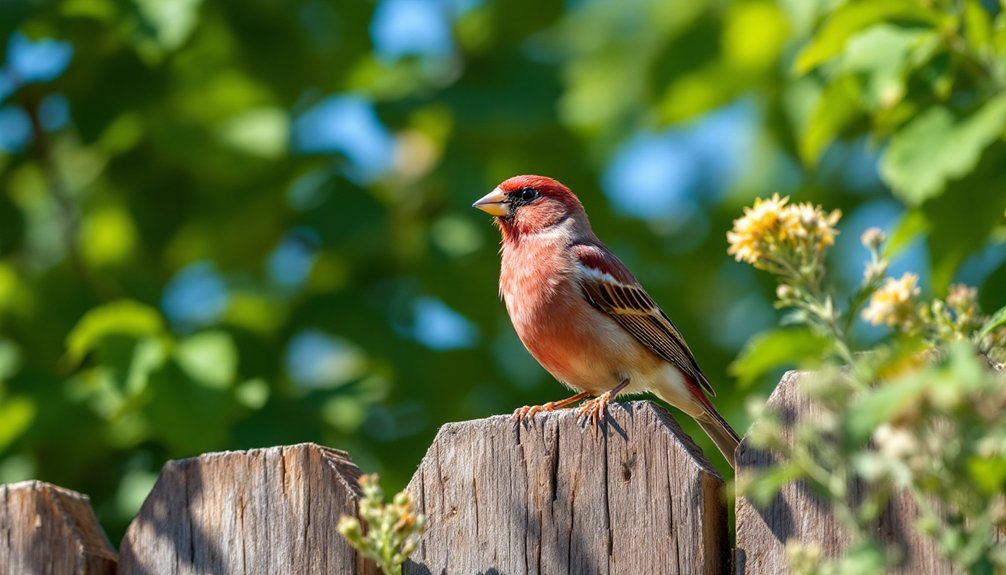
Moving from the House Sparrow to another fascinating bird, the House Finch offers a vibrant splash of color to Arizona’s backyard landscapes.
Males flaunt pink crowns, while females show streaked brown patterns. You’ll find them in urban backyards, desert scrub, and near water, flocking in large groups.
They feed on seeds and fruit, often visiting feeders, and adapt well to both natural and urban environments.
3) White-Winged Dove
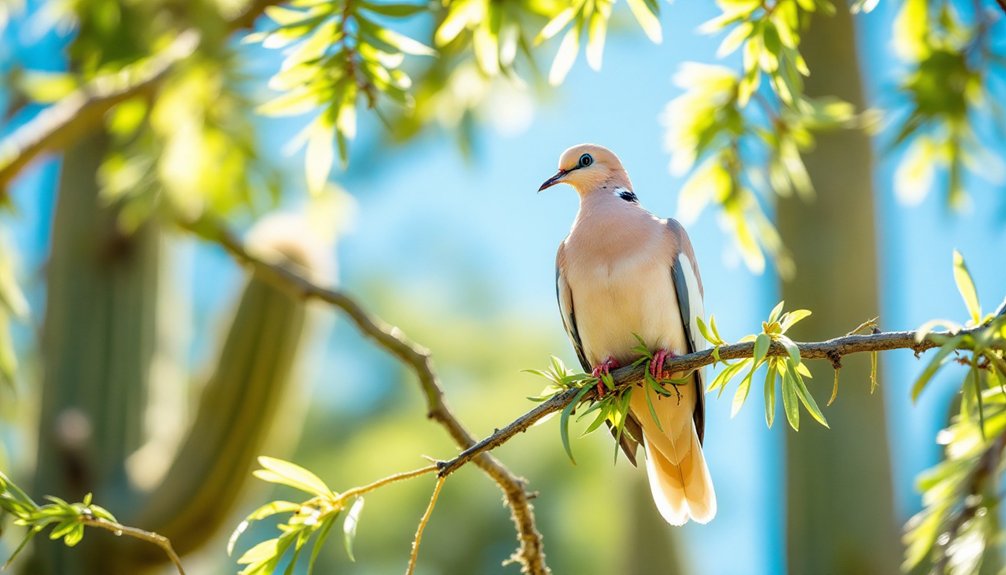
The White-Winged Dove is a versatile bird that thrives in the varied landscapes of the Southwest U.S. and beyond.
You’ll spot them in urban areas, desert scrub, and riparian woodlands. They feed on seeds and cactus fruit, acting as important pollinators.
These doves migrate in massive groups, sometimes reaching up to 4,000 birds, showcasing their social nature and adaptability.
4) White-Crowned Sparrow
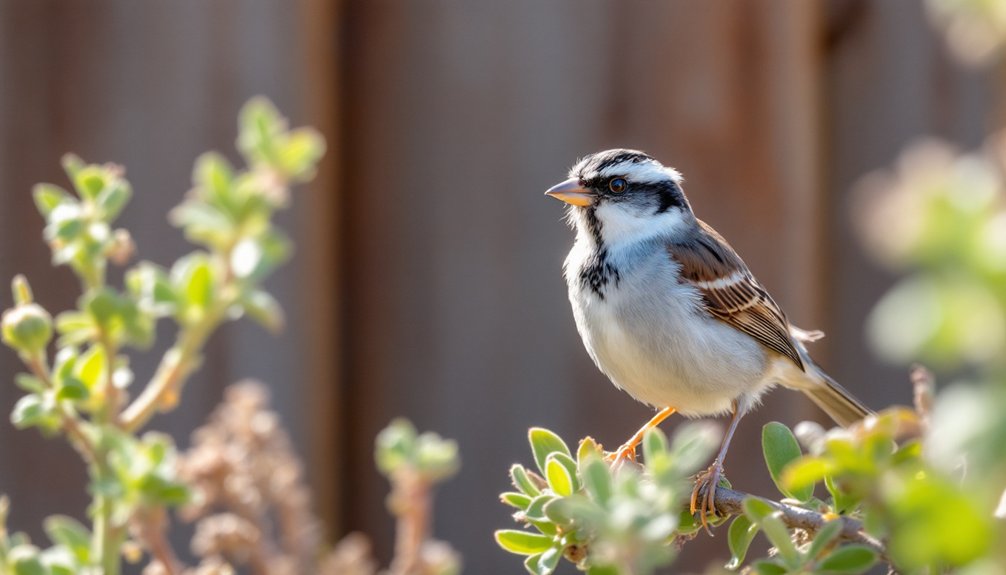
White-Crowned Sparrows are fascinating birds you’ll often encounter across diverse habitats in Arizona and beyond.
You can spot them in brushy arroyos, desert washes, and parks. They migrate at night, with females wintering further south than males.
These sparrows primarily eat seeds and insects, foraging on the ground.
They’re common in southern Arizona, especially in the Sonoran Desert, and are listed as Least Concern.
5) Lesser Goldfinch
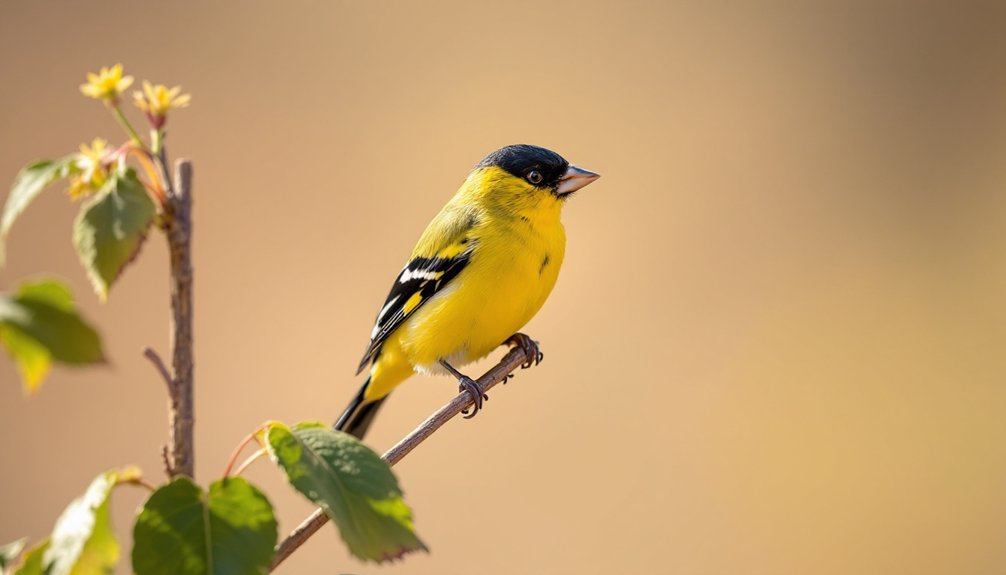
As you explore the vibrant birdlife in Arizona, another enchanting resident is the Lesser Goldfinch.
You’ll find them year-round in Southeastern Arizona, especially in the Sonoran Desert. These small, sociable birds thrive in dry, open woodlands and suburban lawns.
Males sport striking black caps and wings, while females are greenish above. They favor areas rich in seeds, particularly thistle, and often form large, mixed flocks.
6) Mourning Dove

Mourning doves, familiar yet graceful residents across Arizona’s landscapes, captivate with their gentle cooing and agile flight.
You’ll spot these year-round residents in Tucson, Mesa, and Yuma, thriving in cities and agricultural areas. They prefer woodland-grassland edges and open forests.
Known for their distinctive whistling takeoffs, they can cruise at 55 mph, skillfully foraging seeds in the Sonoran Desert’s riparian habitats.
7) Eurasian Collared-Dove
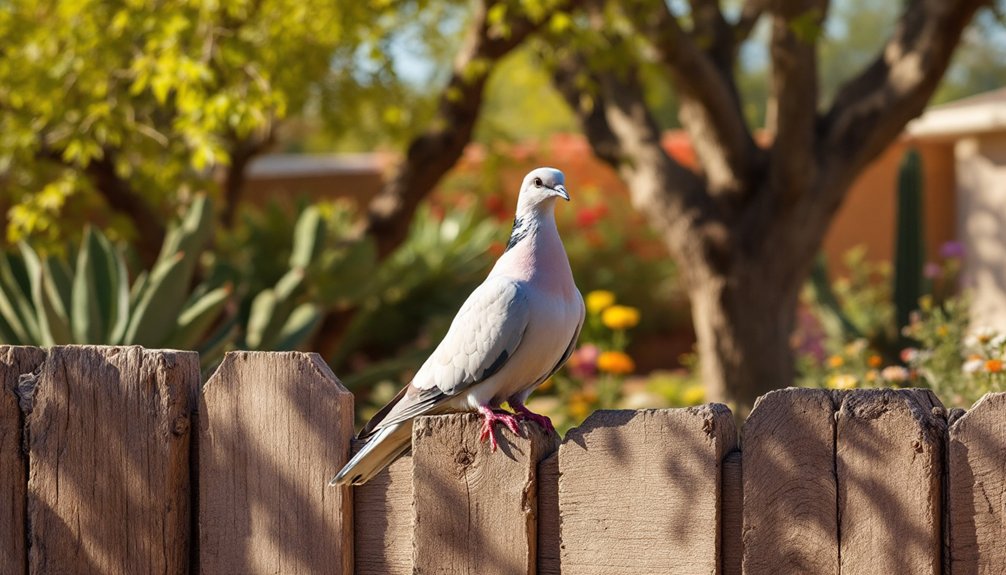
Although relatively new to North America, the Eurasian Collared-Dove has quickly established itself as a familiar sight across Arizona.
You’ll find these adaptable birds in suburbs, farmland, and open country. Their pale color and squared tail feathers make them easy to identify.
Despite their rapid spread, they’re considered of Least Concern, with no negative impacts on native species noted.
8) Rock Pigeon
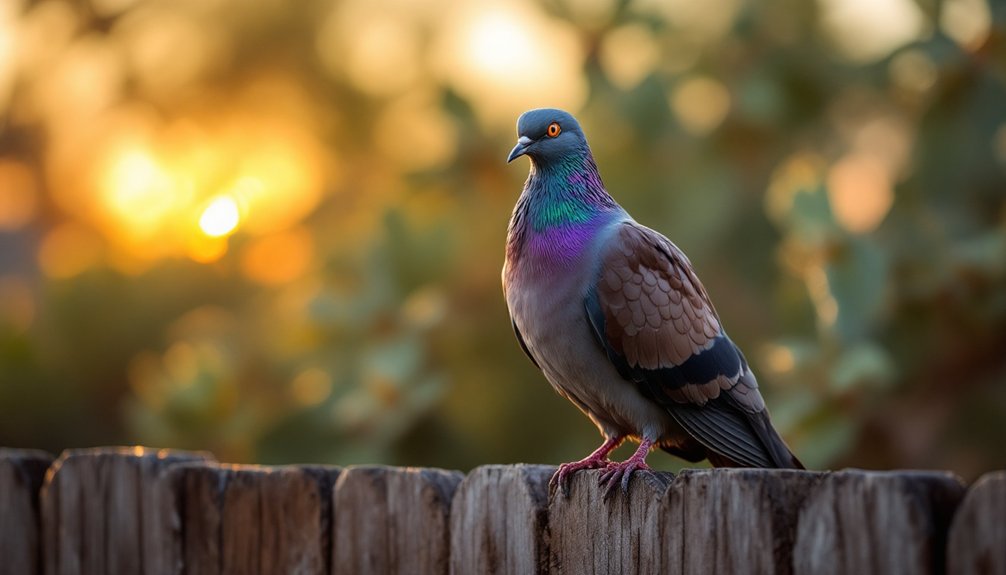
The Rock Pigeon, an iconic fixture in urban landscapes, thrives in Arizona’s bustling cities and natural settings alike.
You’ll spot them on city buildings, bridges, and parks, where they depend on human food. They feed on grains, seeds, and scraps like popcorn.
These pigeons court through elaborate displays, nest in high ledges, and are known for their iridescent necks and distinct cooing.
9) Common Ground-Dove
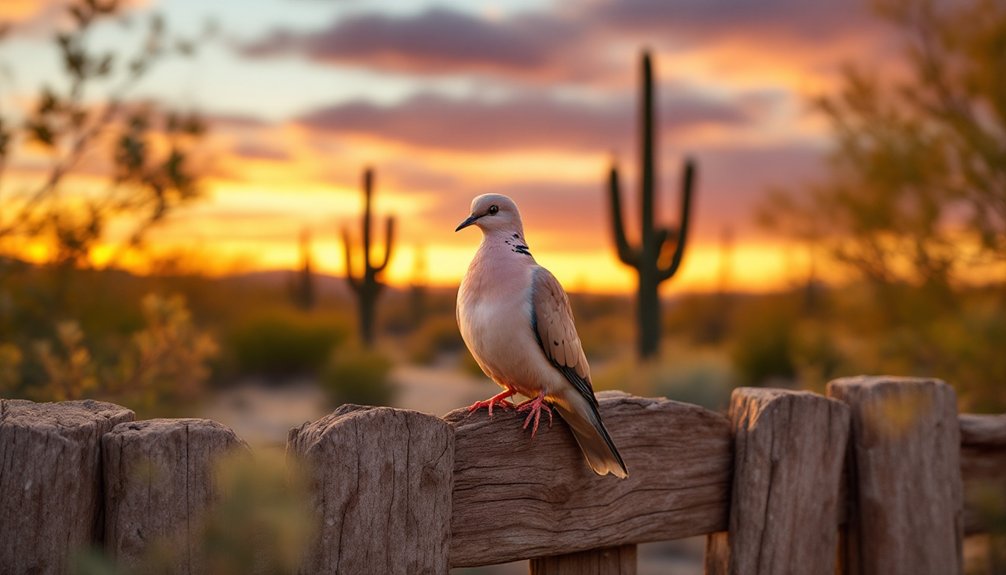
Nestled in the diverse habitats of Arizona, the Common Ground-Dove finds its home among arid scrublands and lush riparian edges.
You’ll recognize this petite bird by its soft grayish-brown plumage, pinkish underparts, and bi-colored bill. Their diet consists mainly of seeds and berries.
Despite their small size, their flight reveals a striking chestnut flash in the wings, a delightful sight.
10) Gambel’s Quail
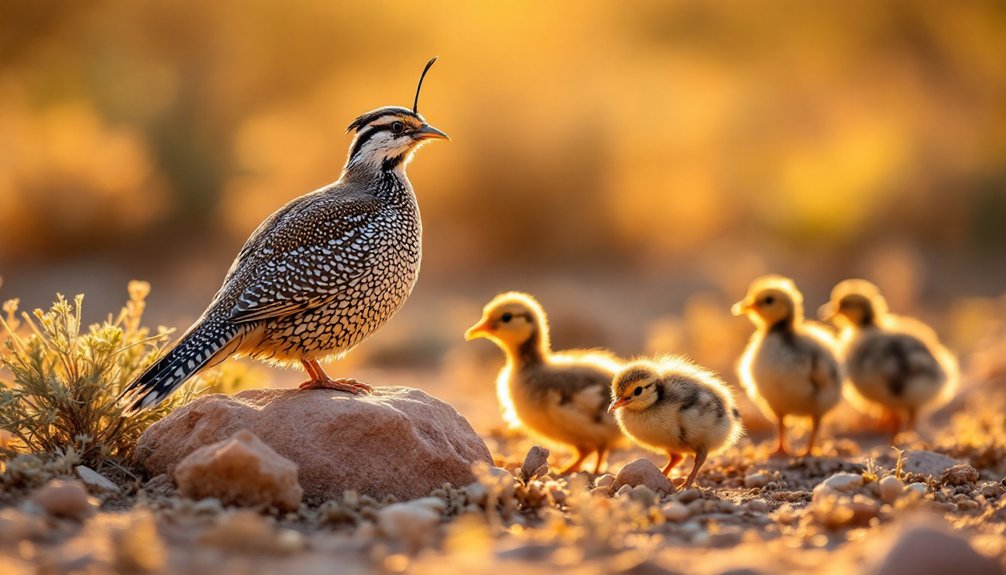
As you explore Arizona’s diverse landscapes, don’t be surprised if you encounter the distinctive Gambel’s Quail.
You’ll find them in brushy deserts, canyons, and even open suburbs where they adapt beautifully.
Watch for their conspicuous topknot and hear their grating call. They forage for seeds and fruits, sprint away from threats, and rely on their camouflage, often nesting under shrubs with impressive parental care.
11) Scaled Quail
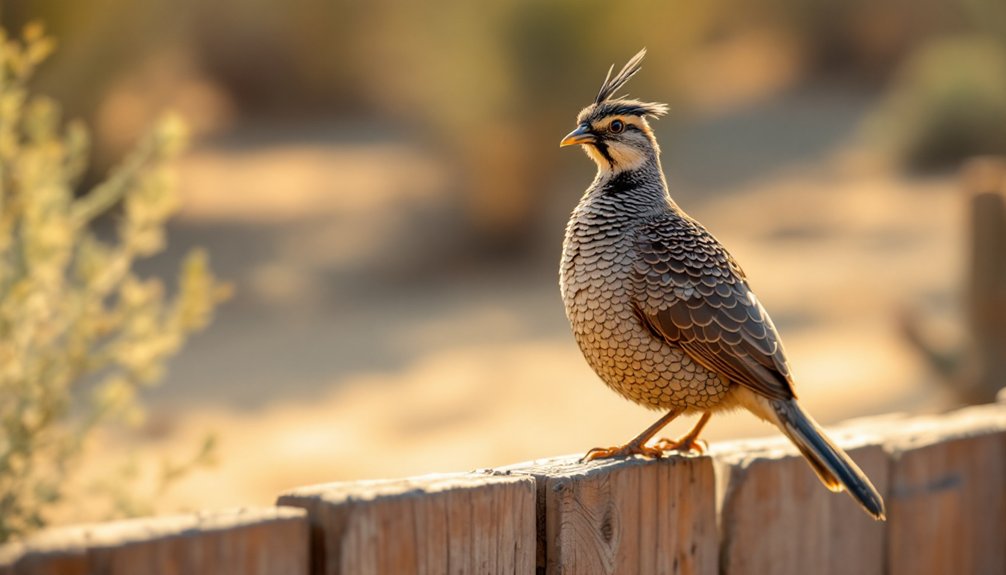
When exploring the vast landscapes of Arizona, you might come across the Scaled Quail, a bird that thrives in dry, open valleys and plains.
These quails prefer southeastern Arizona’s semi-desert grasslands and Chihuahuan desert plains. They rely on rocky slopes and scattered brushy cover for defense.
With a diet rich in mesquite and cactuses, they’re adept at running rather than flying when flushed.
12) Northern Mockingbird
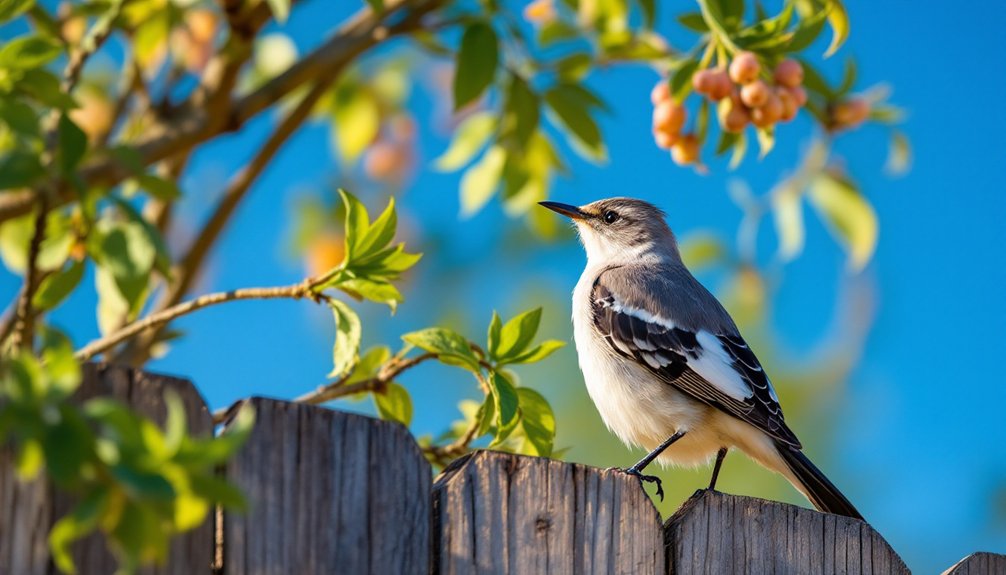
The Northern Mockingbird, with its impressive vocal range and adaptability, is a familiar sight in Arizona’s diverse landscapes.
You’ll find them in open areas like fields, lawns, and urban environments. They thrive in places with dense shrubs and open ground, defending territories fiercely.
Their diet includes fruits and insects, and they’re known for their remarkable ability to mimic over 200 different sounds.
13) Curve-Billed Thrasher
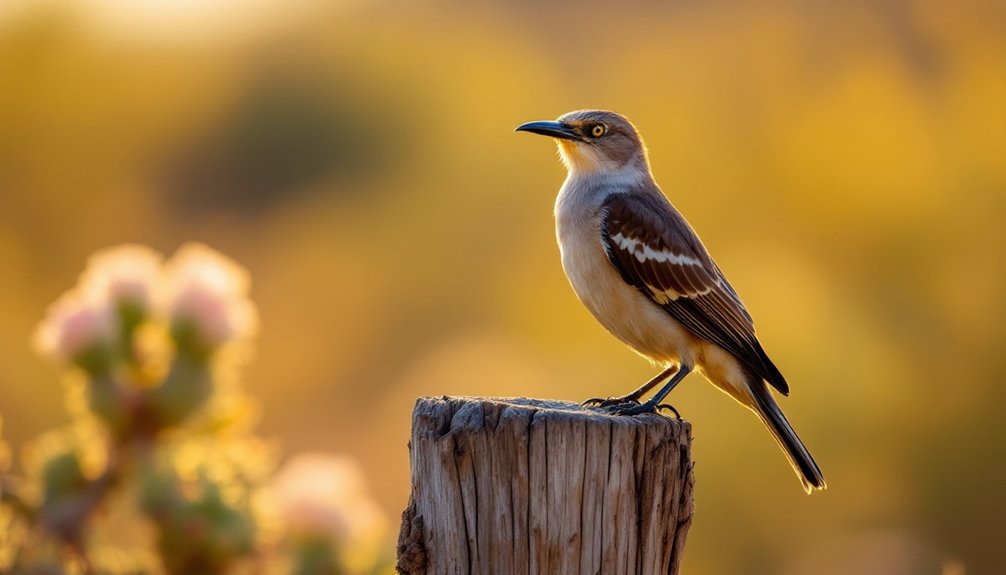
While exploring Arizona’s desert landscapes, you might encounter the Curve-Billed Thrasher.
Favoring desert basins and shrublands, this medium-sized bird uses its slightly curved bill to forage for insects and seeds.
Thrashers often nest in cholla cacti, which protect their young.
They’re known for their aggressive defense of territory and distinctive songs that mimic other species.
Thrashers also adapt well to urban environments.
14) Bewick’s Wren
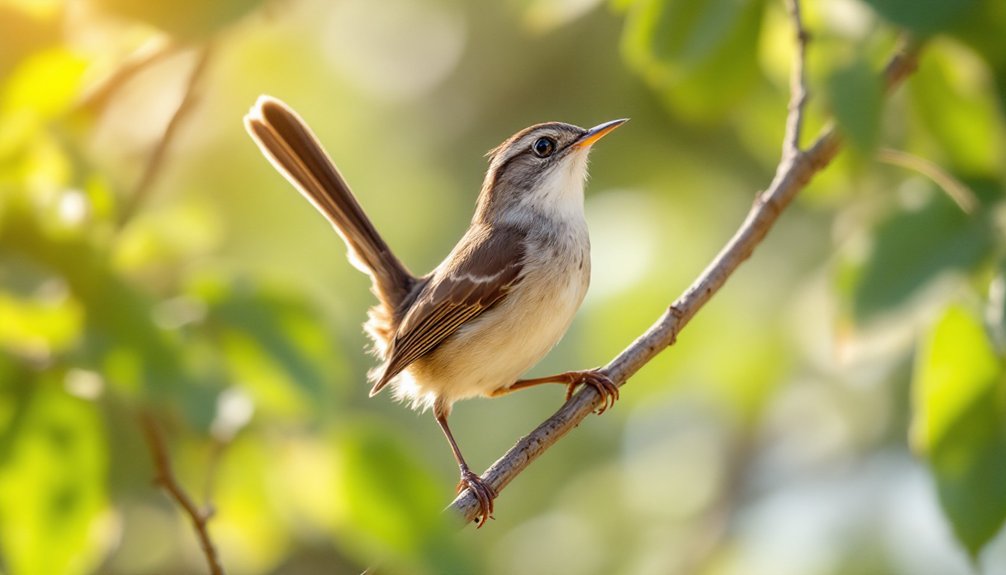
Among the diverse bird species in Arizona, Bewick’s Wren stands out for its adaptability and distinctive behaviors.
You’ll find them thriving in desert foothills, suburban areas, and riparian woodlands. They skillfully use their pointed beaks to extract insects from shrubs and trees.
With a preference for live prey, these wrens often forage in oak and buckbrush, showcasing their resourceful nature in varied habitats.
15) Cactus Wren
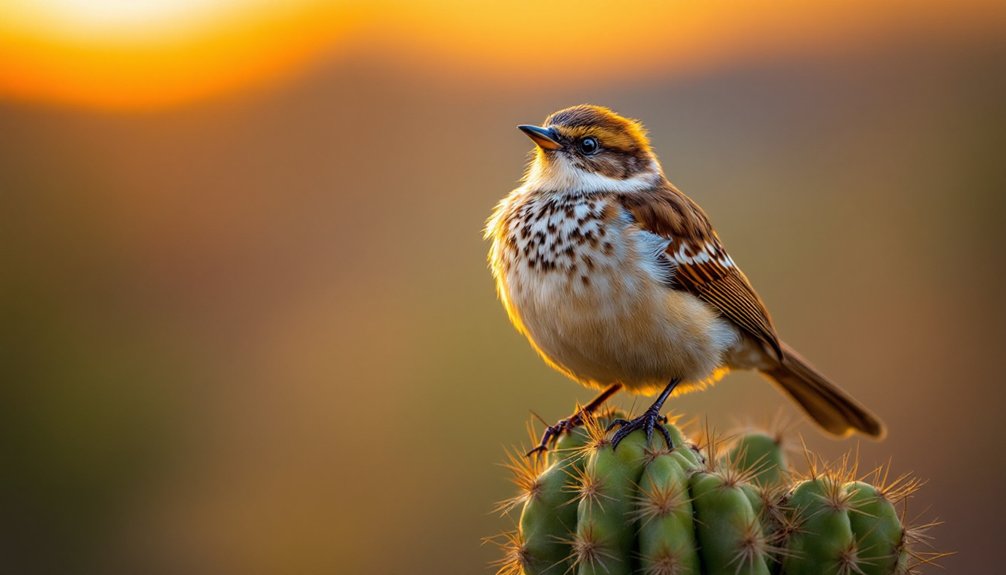
Arizona’s vibrant desert landscapes are home to the resourceful Cactus Wren, a species embodying the rugged spirit of the Southwest.
You’ll find it thriving in the Sonoran Desert, amidst cacti and thorny shrubs like saguaro and mesquite. It primarily feasts on insects, adapting to arid conditions.
Remarkably, it constructs multiple nests in its territory, showcasing its adaptability and commitment to family life.
16) Ladder-Backed Woodpecker
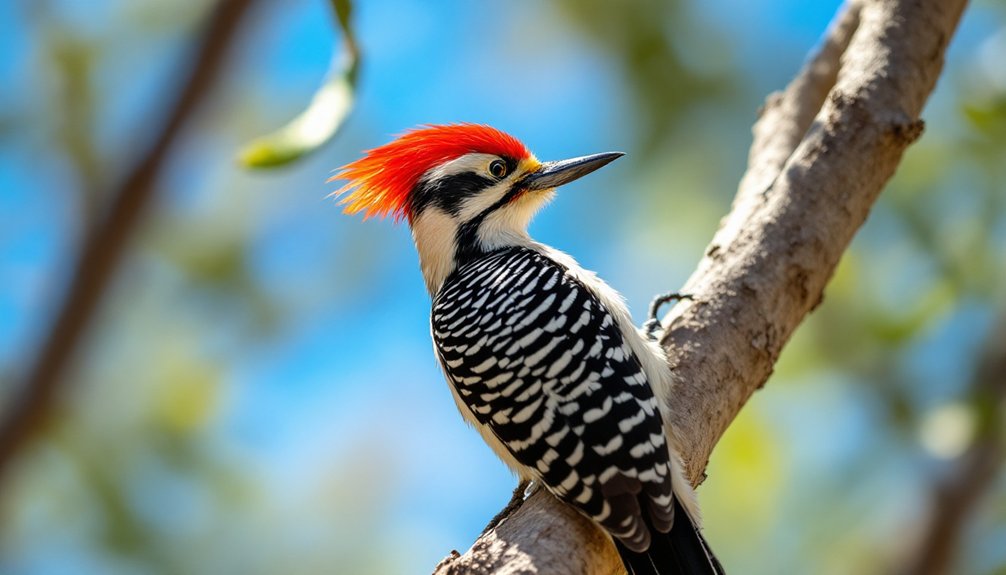
Just as the Cactus Wren finds its niche among the thorny cacti of the Sonoran Desert, the Ladder-Backed Woodpecker thrives in similar arid habitats.
You’ll spot them in deserts, among mesquite and cholla, or even in urban areas. They forage quietly, eating insects and seeds, and their sharp “pweek!” calls echo as they flap and glide across the Arizona landscape.
17) Gila Woodpecker
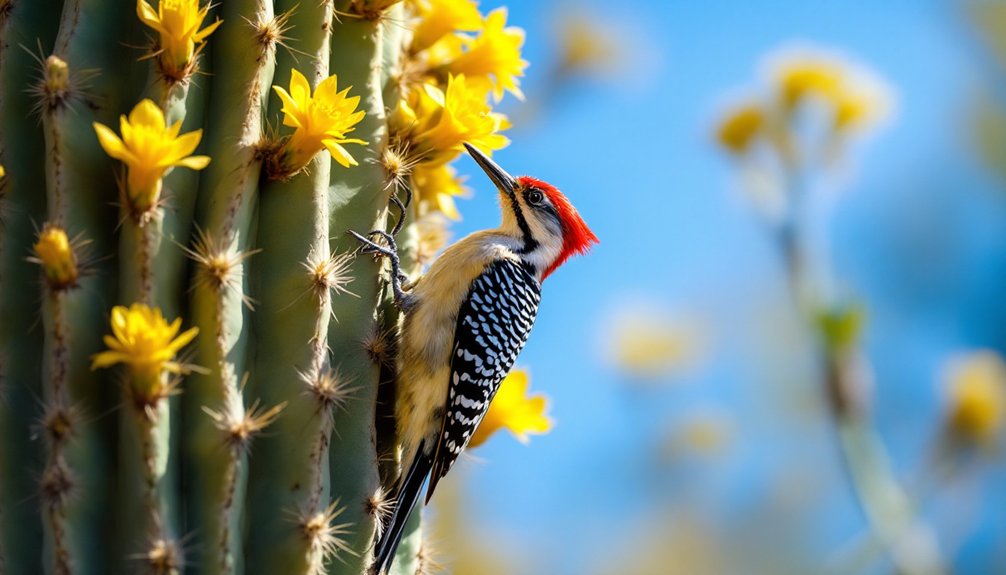
The Gila Woodpecker, a familiar sight in Arizona’s desert landscapes, thrives in lowland areas where saguaros and riparian gallery woodlands are abundant.
You’ll often spot them in arroyos or urban areas with exotic trees like palms. They excavate nests in saguaros and mature trees, foraging for insects and fruits.
Listed as “Least Concern,” they face threats from habitat loss and competition for nesting sites.
18) Red-Naped Sapsucker
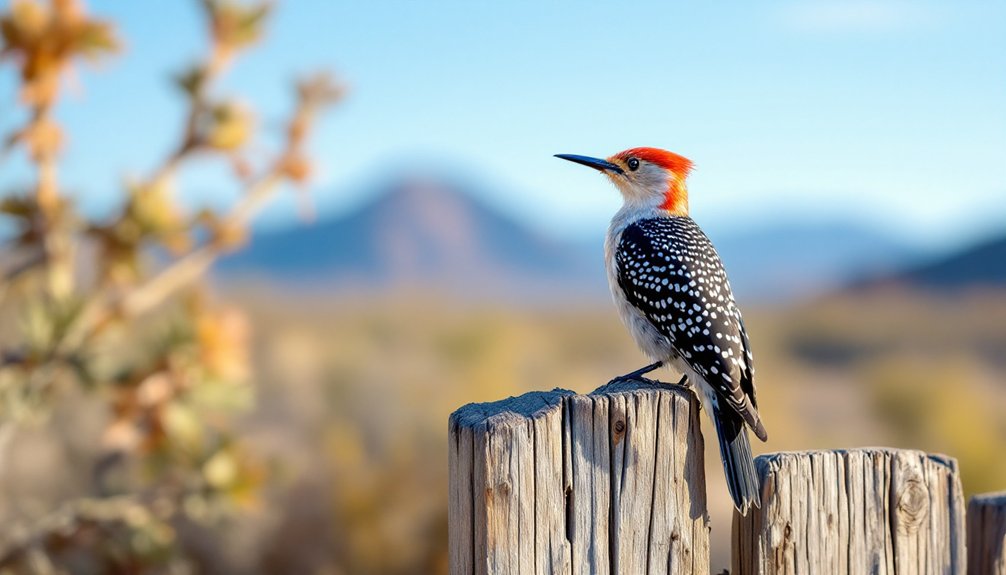
Scattered across Arizona’s mountainous landscapes, the Red-Naped Sapsucker thrives in high-elevation mixed conifer forests, particularly those with a deciduous component.
You’ll find them nesting in cavities of mature aspens and cottonwoods, often choosing trees with heart rot. They rely on sap, fruit, and arthropods for nourishment, diligently creating sapwells.
Wintering in central and southeastern Arizona, they adapt their foraging to conifers.
19) Spotted Towhee
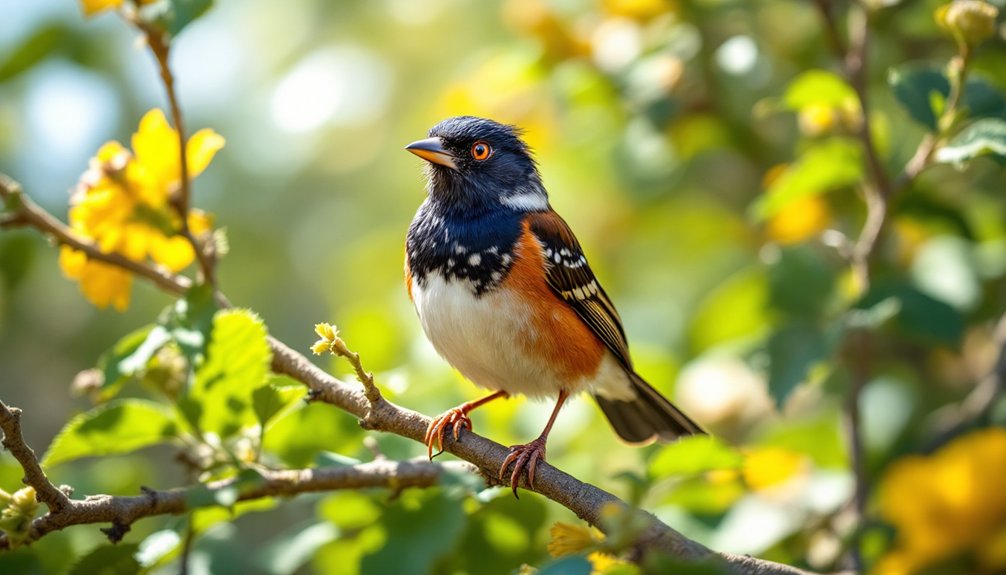
Spotted Towhee sightings are a treat for bird enthusiasts exploring Arizona’s varied landscapes.
These birds thrive in dry upland forests and brushy fields, avoiding arid climates like the Sonoran Desert. You’ll find them rummaging noisily through dry leaves, using a unique “double-scratch” foraging method.
Their diet shifts with the seasons, from insects in the breeding season to seeds and berries in winter.
20) Abert’s Towhee
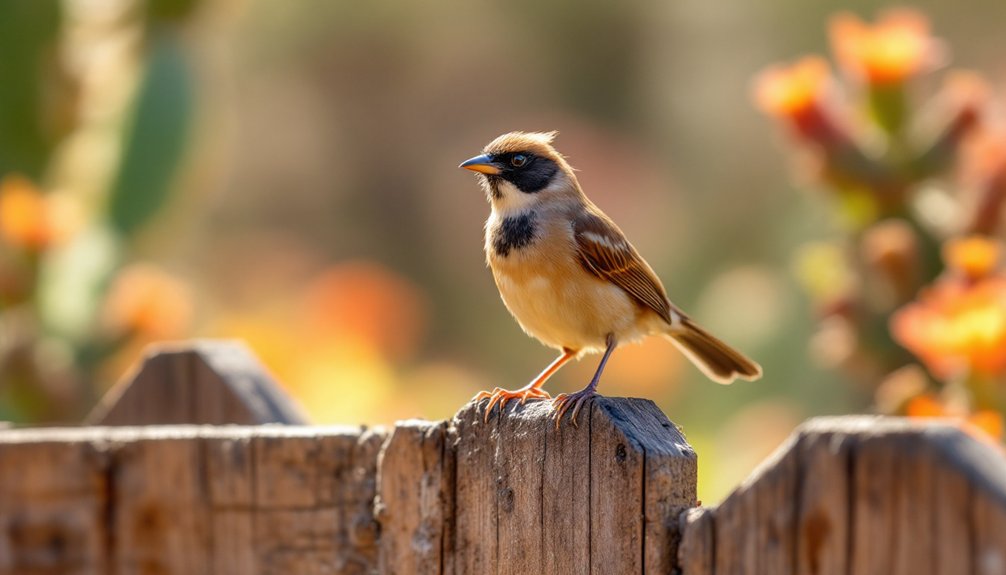
Nestled in the vibrant landscapes of southwestern North America, Abert’s Towhee thrives in the brushy riparian habitats of Arizona’s Lower Sonoran Desert.
You’ll find this bird in areas like Phoenix, along rivers with dense shrubs and mesquite woodlands.
It’s an aggressive defender of its territory, foraging on the ground for insects like beetles and ants, and consuming seeds when insects are scarce.
21) Common Raven
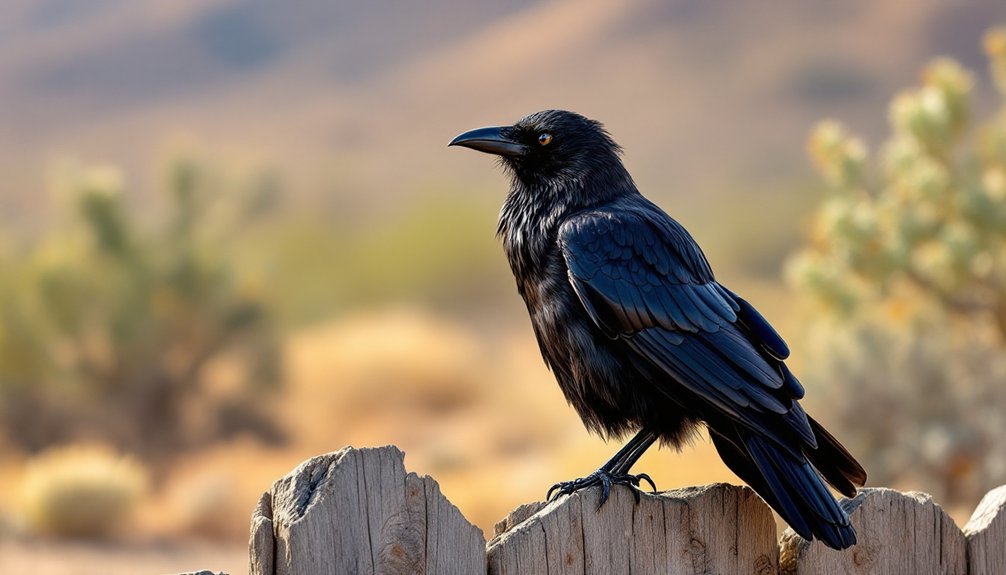
The Common Raven is an enchanting presence in Arizona’s diverse habitats.
You’ll recognize its striking black feathers, reflecting hints of purple and green. Weighing between 1.5 to 3.6 pounds, these intelligent birds can reach speeds of 40 mph.
They’re often solitary but show curiosity, especially when young. With a lifespan of up to 44 years, they’re skilled problem solvers and social creatures.
- 24 Popular Backyard Birds In New Hampshire (With Pictures!) - March 24, 2025
- How to Attract Birds to a Window Feeder? (6 Expert Tips) - March 16, 2025
- How to Provide Water for Birds in Summer? (4 Easy Ways) - March 16, 2025





